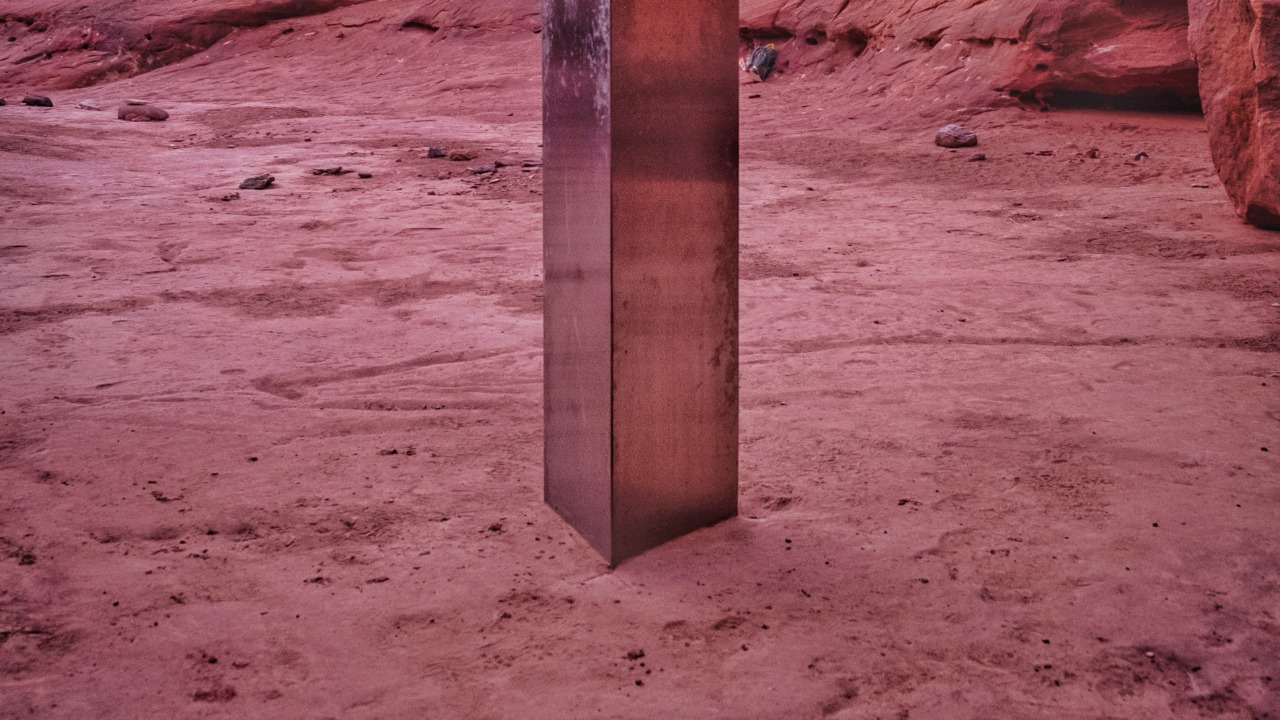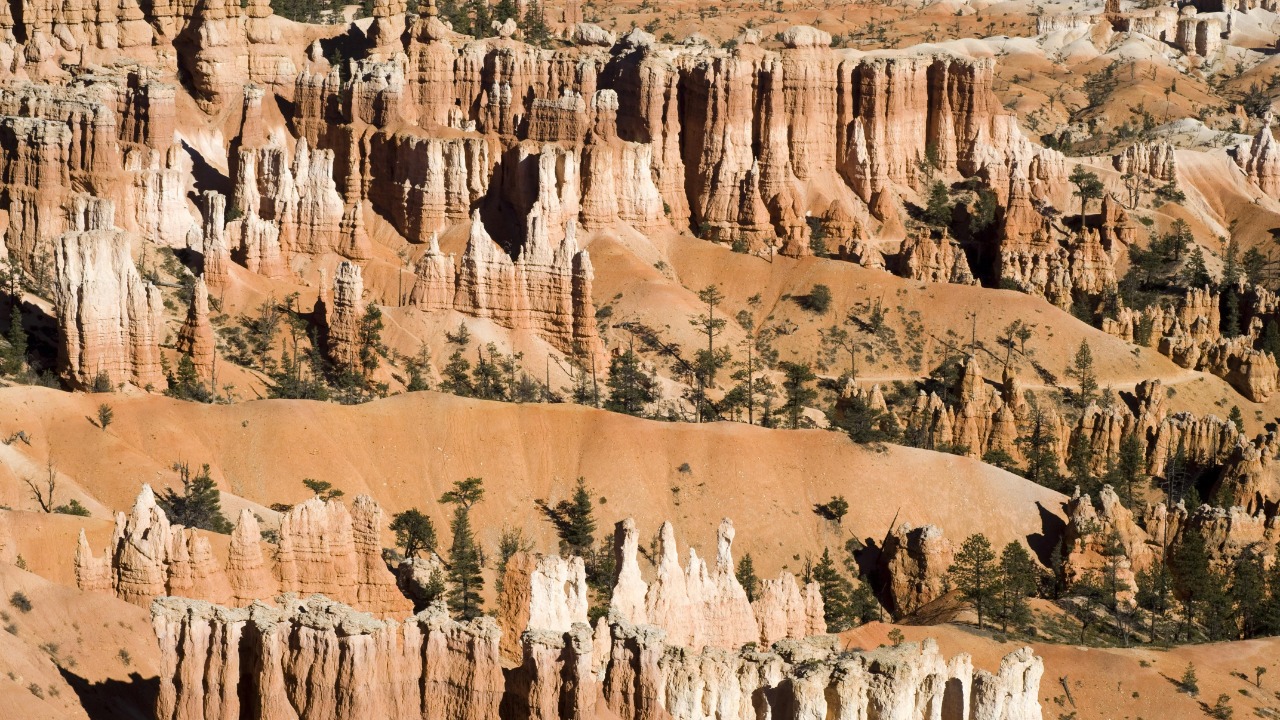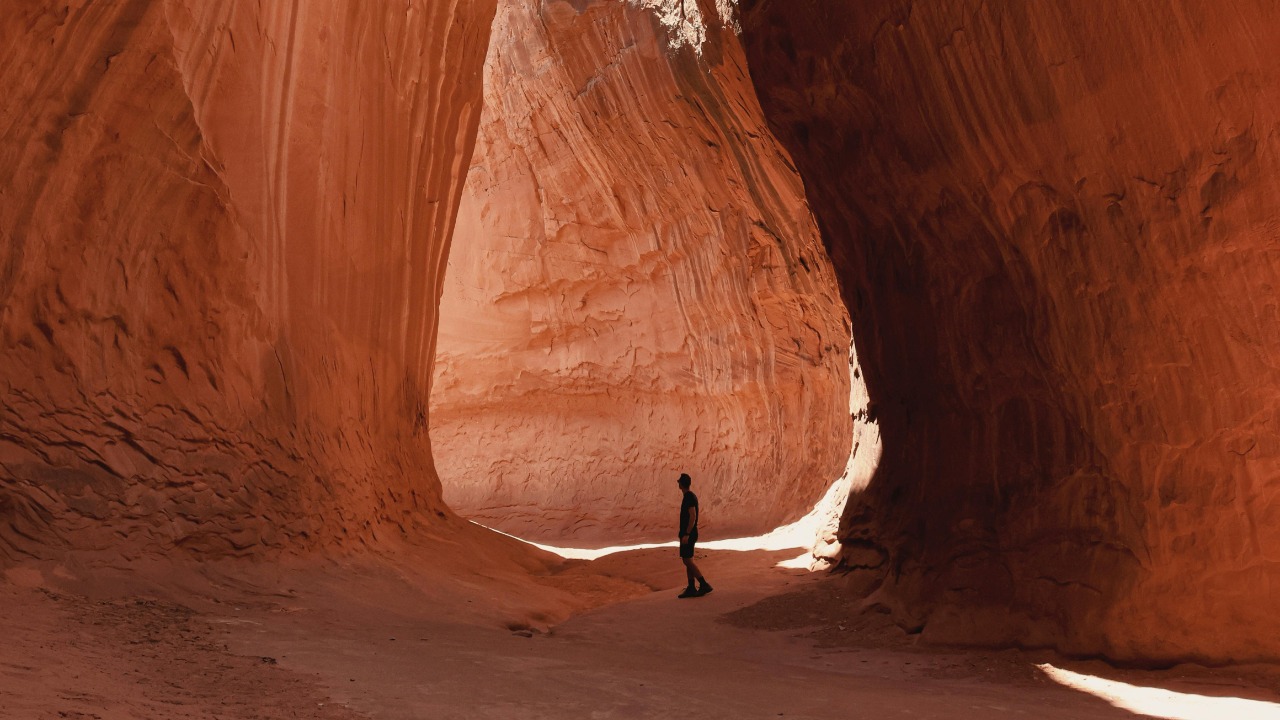
In the vast and remote Utah desert, a shiny metal monolith was discovered, sparking widespread curiosity and speculation. Was this an artifact of alien technology or merely an elaborate art piece? The origins, implications, and cultural phenomenon surrounding this mysterious object have captivated many, leaving questions unanswered but imaginations ignited.
The Discovery in the Desert

The monolith’s discovery was serendipitous, stumbled upon by state employees during a routine wildlife survey in November 2020. As they flew over the rugged landscape, the shiny structure caught their attention, standing out starkly against the earthy tones of the desert. This unassuming find quickly turned into a media sensation as the Bureau of Land Management shared images of the monolith, igniting a wildfire of speculation and curiosity.
Public and media reactions were immediate and intense, with the mysterious object capturing the imagination of people worldwide. Social media platforms lit up with discussions, theories, and wild speculations about the monolith’s origin. Its location, nestled in a remote area of the Utah desert, only added to its enigmatic allure, prompting adventurers to seek it out and document their encounters with the now-famous structure.
Public Speculation and Theories

Theories about the monolith’s origin were as varied as they were imaginative. Some speculated that the monolith was an example of alien technology, a relic left behind by extraterrestrial visitors. This theory, while fantastical, was bolstered by the object’s sleek design and remote location, which seemed to suggest a purpose beyond human understanding.
On the other hand, many believed the monolith to be an art installation or elaborate prank. Theories circulated that it could be a tribute to the late John McCracken, a minimalist artist known for his geometric sculptures. This possibility was supported by the monolith’s resemblance to McCracken’s work, though no definitive link was ever established. The historical context of mysterious objects, from Stonehenge to crop circles, provided a backdrop for these discussions, showcasing humanity’s enduring fascination with the unexplained.
The Cultural Impact

The monolith quickly became a viral sensation, with social media and news outlets amplifying its reach. The object inspired a wave of creativity, with memes, artworks, and other forms of expression proliferating across the internet. This cultural response underscored the power of mystery and the human drive to create and share stories, even when faced with the unknown.
Beyond individual creativity, the monolith’s impact extended into pop culture, influencing movies, TV shows, and other media. Its sudden appearance and equally sudden disappearance mirrored the narrative arcs of many science fiction stories, further embedding it in the public consciousness as a symbol of the mysterious and the unexplored.
The Aftermath and Removal

Almost as suddenly as it appeared, the monolith vanished, removed under the cover of night. The disappearance added another layer to the mystery, with debates over whether it was taken by authorities, artists, or unknown parties. The reactions to the removal were mixed, with some lamenting the loss and others viewing it as a fitting end to an enigmatic story.
In the wake of the Utah monolith’s disappearance, similar structures began appearing worldwide, from California to Romania. These new monoliths, while intriguing, lacked the original’s mystique, often seen as direct copies or tributes rather than the harbingers of mystery and intrigue.
Reflections on Modern Myth-Making

The monolith saga highlights the power of mystery and its ability to captivate the public imagination. In an age of information, where answers are often just a click away, the unexplained holds a unique allure, drawing people into speculation and storytelling.
Modern technology plays a crucial role in spreading and sustaining contemporary myths. Social media platforms and digital communication allow stories like the monolith to reach a global audience rapidly, creating a shared narrative that transcends geographical and cultural boundaries. This phenomenon speaks volumes about our innate curiosity and the human desire to find meaning in the unknown.
Ultimately, the monolith’s story is a testament to the power of mystery in an age of certainty. It reminds us that while we may seek answers, sometimes the questions themselves are what truly captivate us, driving our quest for understanding and connection in a vast and complex world.